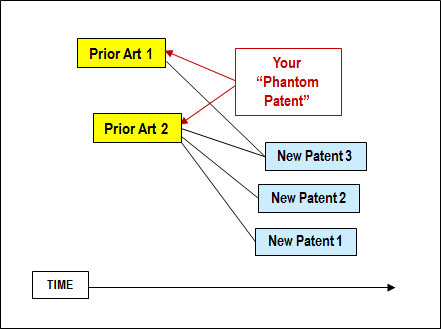 One of the benefits of filing for a patent for your innovation is the ability to keep track of what your competitors are doing within the same IP space. When you apply for a patent, you must file an IDS, or Information Disclosure Statement where you cite prior art. Prior art is patents or other intellectual property that you drew upon to create your innovation, and is relevant in determining whether your invention is “novel.”
One of the benefits of filing for a patent for your innovation is the ability to keep track of what your competitors are doing within the same IP space. When you apply for a patent, you must file an IDS, or Information Disclosure Statement where you cite prior art. Prior art is patents or other intellectual property that you drew upon to create your innovation, and is relevant in determining whether your invention is “novel.”
As you may already understand, innovations that cite few pieces of prior art and are then cited by several others as prior art are pretty rare. These are referred to as seminal patents and often disrupt the industry where they’re introduced. These seminal patents are then improved upon throughout the years as new technology and innovation builds upon the original idea.
Tracking Your Competition
You can see, then, how having some idea of the patents and intellectual property entering the landscape in your industry might help you track what your known and unknown competitors are planning. As they cite similar prior art to your own patents, you can get insights into their technology, strategy and perhaps conclude what their latest innovations may be.
However, your U.S. patent application will not be published for eighteen months. Even then, the examination process may take another year or two. How can you keep track of those competitors during that time to make sure they don’t outmaneuver you before your patent can be approved?
The IPVision Phantom Patent
After your application, we can place a “phantom patent” in our database. Along with this phantom patent, we’ll include the citation list of patents you named as prior art. We then track these cited patents to see who else is citing them, just as we would for a fully approved patent. Not only do we complete an initial assessment; we also track these patents each week as the newly issued patents are published.
This allows you more protection than we’ve already discussed. In addition to the ability to keep an eye on your competitors, you can also protect the value of your own patent. Because the approval process takes so long, similar patents could appear on the landscape while you’re waiting for approval. If your patent has an earlier filing date, then you may be able to amend your claims to cover what is claimed by the newly issued patents. This could allow you to undercut the value of that newly issued patent.
Here, we have a patent that identifies the same prior art as three other patents. Below, you'll see what this looks like before your patent is approved. The phantom patent essentially holds the spot, allowing you to see all activities as though your patent is already approved.

These phantom patents are unique to IPVision. If you’d like to protect your innovation while also watching what your competitors are doing as you await approval for your filing, give us a call. We’ll show you how valuable the phantom patent really can be.



